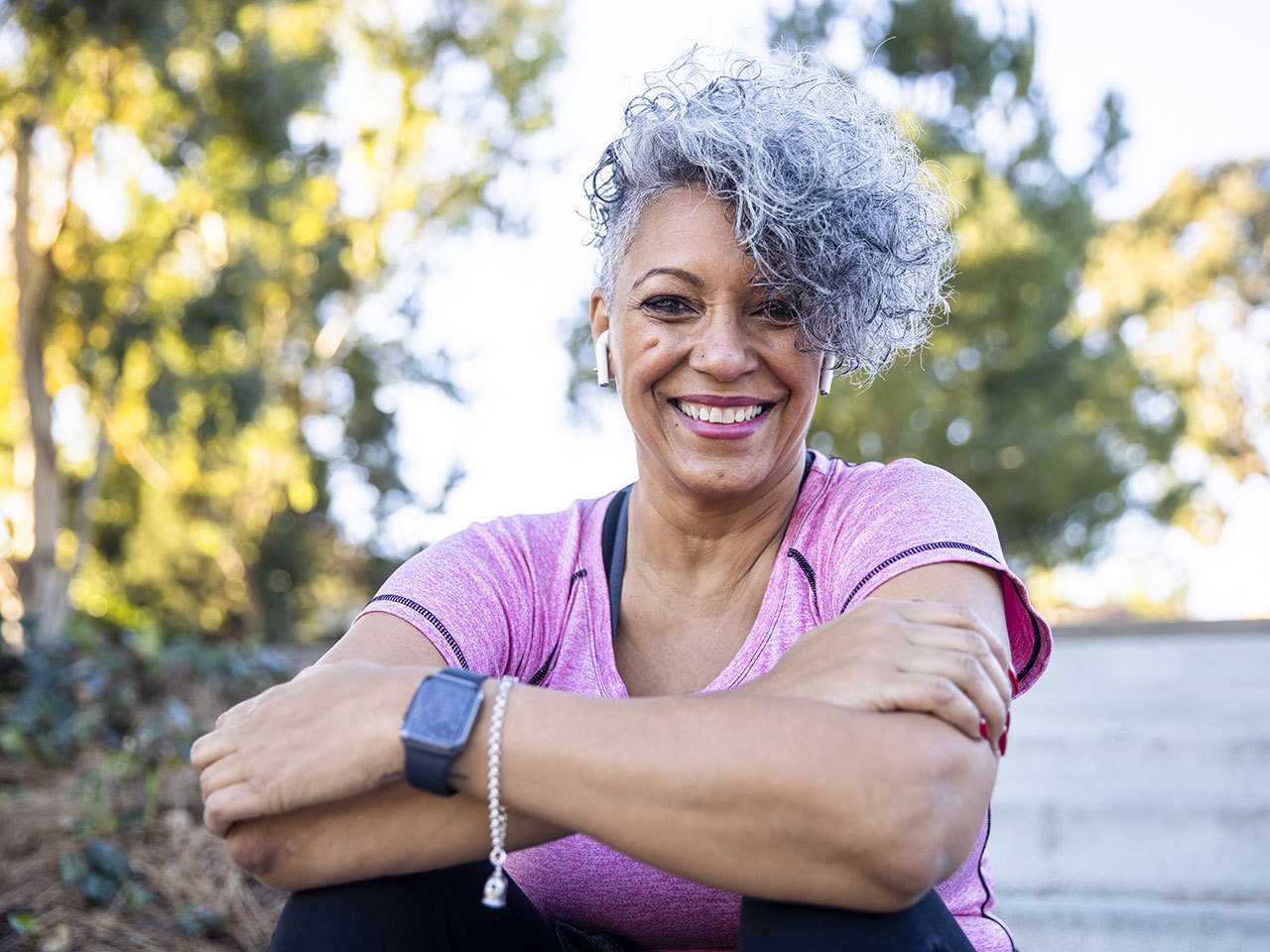Menopause
The term “menopause” refers to a woman’s final menstrual period. Since most women experience irregular periods leading up to their final period, menopause is only confirmed after a woman experiences 12 straight months without a period. For most women, this occurs naturally between the ages of 45 and 58. For some women, menopause may happen earlier, or as a result of illness, surgery or certain medical treatments, such as chemotherapy.
“Perimenopause” (meaning “around menopause”) is the medical term for the years leading up to menopause and the 12 months after. Many people use “perimenopause” to refer to the years leading up to a woman’s final period, “menopause” to refer to the 12 months following that, and “postmenopause” to refer to all the years beyond menopause. Since it can be difficult for any woman to determine what stage of the process she is in, “menopause” often serves as a useful catch-all term for all stages of the menopause transition.
Most women complete the menopause transition within four years—though for some it may take as little as two years and for others, eight years or longer. The amount of time likely depends on several factors, not all of which are fully understood.
During perimenopause, women may experience a number of symptoms as their ovaries gradually ramp down their production of estrogen and progesterone (female reproductive hormones). Typical symptoms include irregular periods, hot flashes, night sweats and trouble sleeping. Many women also experience a drop in energy levels, mood changes, pain during sex and breast pain. Most of these symptoms can be significantly improved with lifestyle changes or medical treatments such as hormone therapy.
“Perimenopause” (meaning “around menopause”) is the medical term for the years leading up to menopause and the 12 months after. Many people use “perimenopause” to refer to the years leading up to a woman’s final period, “menopause” to refer to the 12 months following that, and “postmenopause” to refer to all the years beyond menopause. Since it can be difficult for any woman to determine what stage of the process she is in, “menopause” often serves as a useful catch-all term for all stages of the menopause transition.
Most women complete the menopause transition within four years—though for some it may take as little as two years and for others, eight years or longer. The amount of time likely depends on several factors, not all of which are fully understood.
During perimenopause, women may experience a number of symptoms as their ovaries gradually ramp down their production of estrogen and progesterone (female reproductive hormones). Typical symptoms include irregular periods, hot flashes, night sweats and trouble sleeping. Many women also experience a drop in energy levels, mood changes, pain during sex and breast pain. Most of these symptoms can be significantly improved with lifestyle changes or medical treatments such as hormone therapy.
Is it perimenopause or menopause?
Take a self-assessment quiz to learn more about your symptoms.

Lifestyle tips
Behavior
Diet
Exercise
Lifestyle
Stress management
Treatment options
Whether your symptoms are mild or severe, you don’t have to suffer. Our midlife and menopause specialists will help you better understand what’s happening to your body. We can recommend proven treatments that specifically address your symptoms. Treatment may include changes to your diet, increased exercise and hormone replacement therapy.
Medication
Alternative therapies
Frequently asked questions
What is menopause?
What causes menopause?
What is the average age of menopause?
What are the symptoms of menopause?
What causes menopause symptoms?
My periods are irregular but I don’t have any other symptoms. Am I in menopause?
Contact Us
Talk to a care navigator or schedule an appointment at the Women’s Health & Wellness Center.
